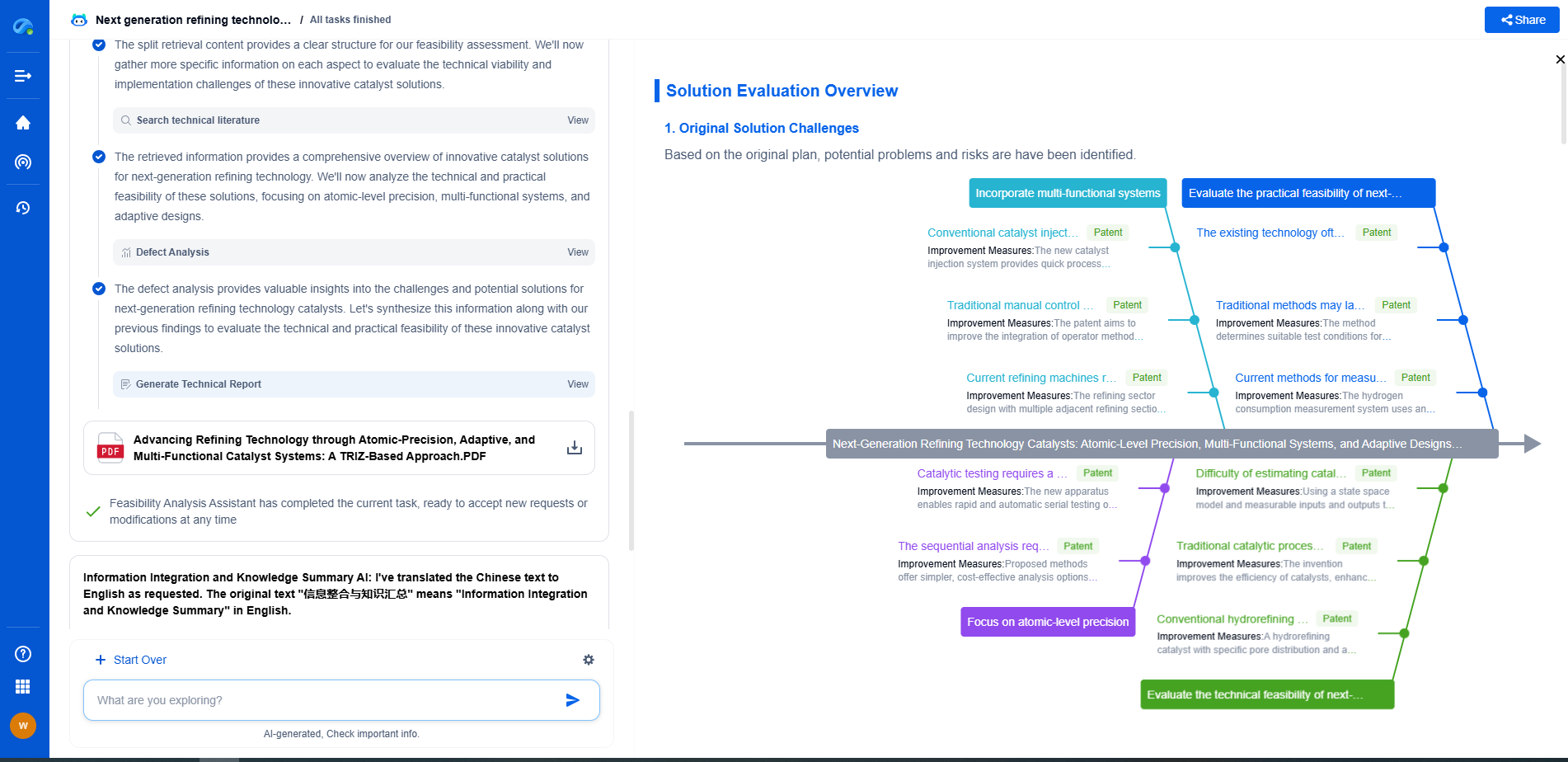What Is a Digital Multimeter (DMM) and How Does It Work?
JUL 9, 2025 |
A digital multimeter (DMM) is a versatile and essential tool used by electricians, engineers, and hobbyists alike. It combines several measurement functions in a single unit, allowing users to measure voltage, current, and resistance with ease and precision. Unlike analog multimeters, which rely on a needle and dial, digital multimeters display readings in numerical format on a digital screen, offering accuracy and convenience. In this article, we will explore what a digital multimeter is, its key components, and how it works.
Components and Features of Digital Multimeters
To understand how a digital multimeter works, it's important to familiarize ourselves with its components and features. A typical DMM consists of the following parts:
1. Display: The digital screen that presents the measurement readings. Most displays are LCD, offering clear visibility in varying lighting conditions.
2. Dial/Selector Switch: This allows the user to select the type of measurement they want to perform, such as voltage, current, or resistance. Some DMMs have auto-ranging capabilities, which means they automatically select the appropriate measurement range.
3. Input Jacks: Input jacks are where the test leads are connected. Typically, there are three jacks: COM (common), VΩ (for voltage and resistance), and A (for current). Some advanced models may have additional jacks for specialized measurements.
4. Test Leads: These are the probes used to connect the multimeter to the component or circuit being tested. They usually come in red (positive) and black (negative) colors.
5. Buttons: Many digital multimeters include buttons for additional functions such as data hold, maximum/minimum values, and mode selection (AC/DC).
How Does a Digital Multimeter Work?
Digital multimeters work by using an analog-to-digital converter (ADC) to transform the analog input signal into a digital reading displayed on the screen. Here's a step-by-step breakdown of how a DMM operates:
1. Measurement Selection: First, determine the type of measurement you need to perform, whether it's voltage, current, or resistance, and adjust the selector switch accordingly.
2. Connecting the Test Leads: Insert the test leads into the appropriate input jacks. For most measurements, the black lead goes into the COM jack, while the red lead is placed in the VΩ jack for voltage and resistance or the A jack for current.
3. Taking Measurements: For voltage, connect the test leads across the component or circuit whose voltage you wish to measure. For current, place the meter in series with the circuit. For resistance, ensure the component is de-energized before measuring across it.
4. Reading the Display: Once connected, the digital multimeter will display the measurement on its screen. If the meter is set to auto-range, it will automatically adjust to the correct scale. Otherwise, you may need to manually select the appropriate range.
5. Interpretation and Analysis: Interpret the reading based on the measurement unit displayed (e.g., volts, amperes, ohms). Use this data to analyze the circuit or component's performance.
Common Uses and Applications
Digital multimeters are used in a wide range of applications, from simple electrical repairs to complex electronic troubleshooting. Electricians use them to diagnose wiring issues, engineers rely on them to design and test circuits, and hobbyists use them for DIY electronics projects. DMMs can also be used to test batteries, check continuity in wires, and verify component values.
Safety Precautions When Using a Digital Multimeter
While digital multimeters are incredibly useful, it's important to follow safety precautions to prevent accidents and equipment damage. Always start with the highest possible range if you're unsure of the measurement value to avoid overloading the meter. Ensure the DMM is rated for the voltages and currents you plan to measure. Keep your fingers behind the finger guards on the test leads, and never measure resistance in a live circuit to avoid electric shock.
Conclusion
Digital multimeters are indispensable tools for anyone working with electrical and electronic systems. They offer precise measurements and a range of features that make diagnosing and troubleshooting circuits straightforward and efficient. By understanding how a digital multimeter works and following safety guidelines, you can effectively utilize this tool for a variety of applications. Whether you're a professional or a hobbyist, mastering the use of a DMM will enhance your ability to work with electrical systems confidently and safely.
Navigating the evolving world of electrical measurement—from high-precision signal integrity to advanced test protocols like BERT or TDR—demands more than just expertise; it demands smart tools.
Patsnap Eureka empowers you to keep up—by turning complex patent data, technical parameters, and industry signals into actionable insight. It’s your AI partner for exploring what’s next in test, measurement, and electrical diagnostics.
💡 Try Patsnap Eureka for free and see how it transforms the way you work with electrical measurement technologies.
- R&D
- Intellectual Property
- Life Sciences
- Materials
- Tech Scout
- Unparalleled Data Quality
- Higher Quality Content
- 60% Fewer Hallucinations
Browse by: Latest US Patents, China's latest patents, Technical Efficacy Thesaurus, Application Domain, Technology Topic, Popular Technical Reports.
© 2025 PatSnap. All rights reserved.Legal|Privacy policy|Modern Slavery Act Transparency Statement|Sitemap|About US| Contact US: help@patsnap.com

